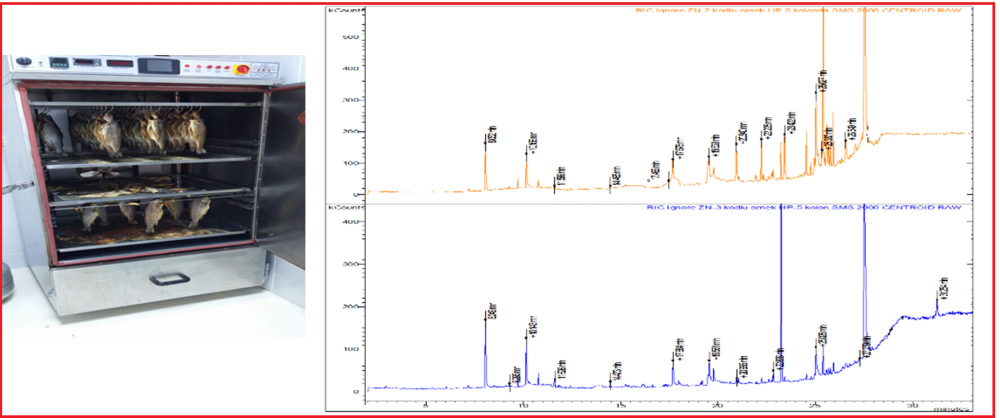JOURNAL 3387
Records of Agricultural and Food Chemistry
Year: 2024 Issue: 2 July-December
p.28 - 39
Viewed 1061 times.
GRAPHICAL ABSTRACT

ABSTRACT
Carcinogenic polycyclic aromatic hydrocarbons (PAHs) that threaten human health are found in smoked products. Mugla has higher production potential regarding both sea bream and sea bass, and trout culture. This study investigated PAHs and other aromatic compounds in natural and cultured abalone fishes smoked with various wood fires. In sensory analyses, trout smoked with olive wood sawdust was the most popular, with a rate of 60.1%, while oak was the second most popular, with a rate of 46.6%. According to the results obtained from chemical analyses, benzo[α]pyrene, known as polycyclic aromatic hydrocarbon, was found to be at a trace level (≤0.005 µg/kg) in the skin parts, while 13-(1-naphthyl)-13H-dibenzo[a,i]fluorene was found in the skin of fish smoked with pinar (Quercus aucheri) wood in an amount of 3 µg/kg. The same compound was detected at a trace level in the fleshy part, including the skin. When evaluated in terms of aromatic compounds other than PAHs, nicotinamide ranged between 15.57 - 52.84 µg/kg, syringol ranged between 2.77 - 39.46 µg/kg, 2-phenoxy ethanol ranged between 8.11 - 37.72 µg/kg in fish smoked with olive wood, while it was not detected in fish smoked with pinar wood. Considering the amounts of PAH compounds determined, the results are appropriate according to the Turkish Food Codex, and it is revealed that there is no risk for the consumer in terms of health and a new smoked fish product can be obtained with olive wood sawdust, which is expected to be consumed with high appreciation.
KEYWORDS- Polycyclic aromatic hydrocarbons (PAH)
- trout
- olive wood
- pinar wood
- sensory analysis
- syringol